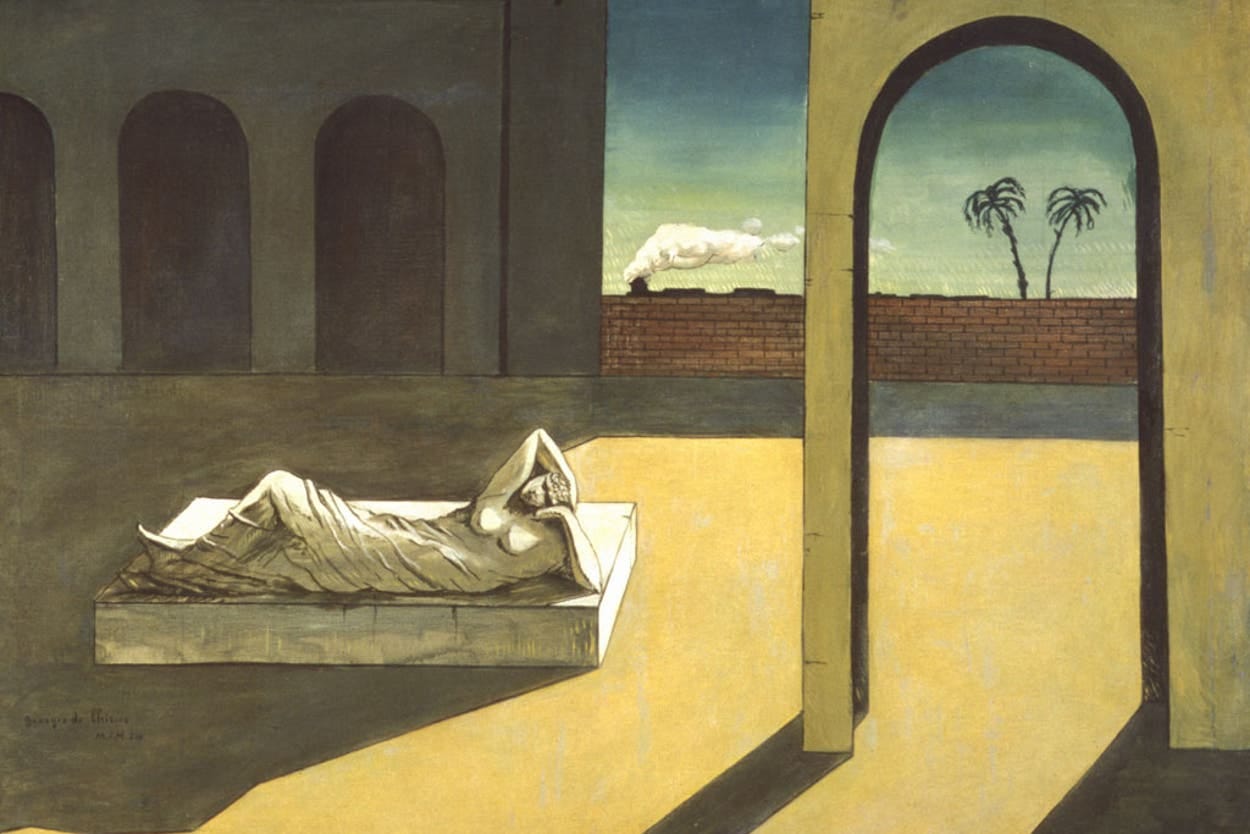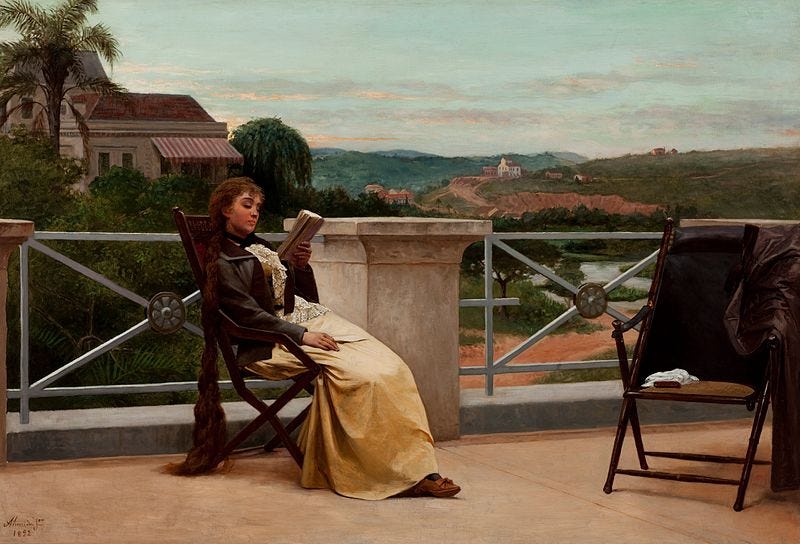Welcome to Alexandra Loves Books!
Below is an index of every book I’ve written about, organized by category and rating.
But before I get to that, I’ll address my most-asked question (“how do you read so much?”) and give you some context about my numerical rating system.
how do you read so much?
As Pandora Sykes writes, “because there are so many things I DON’T DO.” Basically, I read a lot. I read for about thirty minutes when I wake up in the morning and an hour or so before bed. I listen to books when I’m in the car, walking my dogs, and cooking. I also read multiple books at once in basically every format. I don’t write about every book that I read, because I don’t have a lot to say about some of the more formulaic reads, like sequels, thrillers, some sci-fi/fantasy books, or the Bridgerton series. I cover these books when I have thoughts to share on them or if one really stood out to me.
I’m a relatively fast reader and listener. I read approximately 100 pages per hour, although this rate varies slightly depending on the type of book.
I also listen to audiobooks at two, three, or even four times the normal speed. I’ve gradually worked up to this. While many people might consider this fast, I am definitely not a “speed listener.” Some blind people can process speech sped up to 25 syllables per second. On average, a person speaking rapidly will verbalize about 6 syllables per second. Listen to this audio sample to hear what 16 syllables per second sounds like. I cannot understand it at all.
I often combine formats for one book. I read and listen to books in all formats—print, Kindle, Kindle on iPhone, and audio. I might start a book on audio and then switch to print or Kindle format. If I’m really into a book in print and have a long drive or hike ahead, I’ll switch to the audio format for that activity. My only rule is that I cannot pay for both versions, so I’ll only adopt this hybrid format for books that I can get one or both formats for free.
I get my books from many places and have way too many “to be read” piles. I always have a few books on my physical bookshelf, on my Kindle, and on hold from the library.
Advanced Reader Copies (ARCs) from publishers
Kindle
Libby and Hoopla (ebooks and audiobooks from the library)
Physical books that I buy from my bookstore (we’re all dreaming of that 1,000 book library)
Physical loans from the library
Discount books through BookBub for Kindle and Chirp for audiobooks (BookBub and Chirp post discounts for books and audiobooks, so I will buy something that looks interesting when it’s on sale for around $1)
Spotify (paid subscription—I get 15 hours of audiobook hours a month)
Audible (paid subscription, although I sporadically cancel this one)
Kindle Unlimited (paid subscription, although I’ve canceled this one)
my rating system:
I have a love/hate relationship with numerical ratings. The average numerical rating of a book on Goodreads does not matter to me that much—often, my favorite books get a low 3/5 from readers. There are also plenty of books with very high ratings that I find unreadable (looking at you, Onyx Storm).
However, I still find it to be a useful, albeit imperfect, measure of my feelings on a book. I try to balance my assessment of the book’s quality compared to other novels in that genre (does the book generally achieve what it sets out to do?) with my personal opinion of it (did I like it?). I also rate books based on their subcategory. I judge a fun thriller based on other fun thrillers, rather than comparing it to a prize-winning literary fiction novel.
Basically, you should take these numbers with a grain of salt. Detailed written reviews are the whole point of this Substack!
My general scale:
🗑️🔥 I would not recommend this book to anyone. I probably should have stopped reading it. I rarely, if ever, give a book a 1/5, usually because I did not finish it.
😑 This book was not my thing, and I would likely give it away if I owned a physical copy. However, it had some good moments, and I could see why some people might like it.
🙂 I liked it, had a good time, and would recommend it to the right person. However, I might consider giving this book away if I owned a physical copy.
😄 I had a great time reading it and highly recommend it. They execute well in their genre, but I had some minor issues with it. I would likely reread this book and might even buy a physical copy to reread one day.
🤯 No notes. I absolutely loved it. One of my all-time favorites. There’s something just remarkable about this book—whether that be an unputdownable plot, excellent prose, sharp dialogue, realistic characters, or something else that’s just unique. I will probably force my husband to read it.
fiction:
historical fiction:
Small Things Like These by Claire Keegan (a coal merchant in Ireland in December 1985 makes a delivery at a local convent and sees a young girl being mistreated: 128 pages). my rating: 4.5/5.
The Postcard by Anne Berest, translated from French by Tina Kover (spans four generations and takes place in Russia, Latvia, Palestine, and France: 464 pages). my rating: 4.5/5.
Playground by Richard Powers (set in Illinois and French Polynesia; follows 4 characters in 3 timelines: 383 pages). my rating: 4.5/5.
The Safekeep by Yael van der Wouden (set in summer of 1961 in the Dutch countryside; about a woman becomes obsessed with her brother’s girlfriend: 272 pages). my rating: 4.5/5.
Swimming Home by Deborah Levy (follows two middle-class families on vacation in Nice in July 1994; their vacation is interrupted by an intruder: 165 pages). my rating: 4.5/5.
Galatea by Madeline Miller (reimagines Ovid’s Pygmalion from Metamorphoses as the prototype of the incel: 60 pages). my rating: 4.5/5.
Long Island by Colm Tóibín (sequel to Brooklyn: 294 pages). my rating: 4.3/5.
Kairos by Jenny Erpenbeck, translated from German by Michael Hofmann (follows a torrid, years-long love affair in East Berlin in the late 1980s and early 1990s: 314 pages). my rating: 4.5/5.
Euphoria by Lily King (follows a love triangle among anthropologists in 1933 Papua New Guinea; very loosely based on Margaret Mead’s life: 256 pages). my rating: 4.3/5.
Writers & Lovers by Lily King (set in late 1990s Boston; about a 31-year-old aspiring writer navigating life and relationships: 320 pages). my rating: 4.3/5.
Possession: A Romance by A.S. Byatt (part academic satire, mystery thriller, Victorian love story, and even a bit of fantasy; told from alternating points of view in two timelines: the late 1980s and Victorian England: 517 pages). my rating: 4/5.
The English Patient by Michael Ondaatje (set in Northern Africa and Italy from 1939-1945; the English patient, who is badly burned and has amnesia, slowly recalls his past: 320 pages). my rating: 4/5.
The Man Who Saw Everything by Deborah Levy (a literary puzzle of a novel that follows Saul Adler, a twenty-eight-year-old British historian, who travels to Communist East Berlin in September 1988 for academic research: 199 pages). my rating: 4/5.
Martyr! by Kaveh Akbar (set in Tehran, NY, and Indiana; follows Cyrus Shams, a struggling poet and recovering alcoholic and addict in his late 20s, and his relatives, from 1954 to the 2010s: 352 pages). my rating: 4/5.
The Secret History by Donna Tartt (a psychological thriller that focuses on a group of classics students at a small liberal arts college in Vermont in the 1980s: 559 pages). my rating: 4/5.
These Days by Lucy Caldwell (follows multiple characters during the Belfast Blitz in 1941: 288 pages). my rating: 4/5.
Whale Fall by Elizabeth O’Connor (set in 1938 on a remote island off the coast of Wales; follows a young villager and two anthropologists who come to stay in the island: 224 pages). my rating: 3.8/5.
Deep Cuts by Holly Brickley (follows a woman in her 20s navigating the early 2000s music world: 227 pages). my rating: 3.7/5
All the Light We Cannot See by Anthony Doerr (follows the parallel lives of Marie-Laure LeBlanc and Werner Pfenning from the 1930s through World War II: 544 pages). my rating: 3.6/5.
Black Butterflies by Priscilla Morris (follows a 55-year-old landscape painter through the first 10 months of the Siege of Sarajevo in 1992: 256 pages). my rating: 3.6/5.
Telex from Cuba by Rachel Kushner (set in 1950s Cuba; follows an array of characters, including the children of the American executives of the United Fruit Company and nickel mines: 322 pages). my rating: 3.6/5.
Hotel du Lac by Anita Brookner (follows a romance novelist on vacation at a luxury hotel in Switzerland: 184 pages). my rating: 3.6/5.
The Coast Road by Alan Murrin (set in a small coastal town in Ireland in 1994; follows 3 women trapped by marriage: 320 pages). my rating: 3.5/5.
Bel Canto by Ann Patchett (about a lengthy fictional hostage crisis in an unnamed South American country: 318 pages). my rating: 3.5/5.
Milkman by Anna Burns (follows an eighteen-year-old girl growing up in Belfast in the 1970s during the Time of Troubles: 352 pages). my rating: 3.5/5.
Held by Ann Michaels (novel-in-stories; set across nearly 120 years, from 1902 to 2025, in France, North Yorkshire, London, Belarus, Finland, and various war zones: 240 pages). my rating: 3.5/5.
The Unmaking of June Farrow by Adrienne Young (historical time-travel romance set in a small town in North Carolina: 320 pages). my rating: 3.5/5.
The Historian by Elizabeth Kostova (follows three characters—respectively in 1975, the 1930s, and the 1950s—searching for Dracula: 704 pages). my rating: 2.8/5.
The Most by Jessica Anthony (set in Newark, Delaware, over eight hours on an unseasonably warm November day in 1957; a woman gets in a swimming pool and refuses to get out: 131 pages). my rating: 1.7/5.
Greek/Roman retellings:
Circe by Madeline Miller (retelling of the myth of Circe: 393 pages). my rating: 4.5/5.
Glorious Exploits: A Novel by Ferdia Lennon (follows two unemployed potters as they produce two plays by Euripides following the Athenian Invasion of Sicily in the 5th century BCE: 304 pages). my rating: 4.4/5.
The Song of Achilles by Madeline Miller (retelling of myth of Achilles: 408 pages). my rating: 4.3/5.
The Silence of the Girls by Pat Barker (reimagining of The Iliad through the eyes of Briseis: 325 pages). my rating: 3.9/5.
Clytemnestra by Costanza Casati (retelling of Clytemnestra: 453 pages). my rating: 3.9/5.
The Women of Troy by Pat Barker (retelling of Euripides’s The Trojan Woman: 307 pages). my rating: 3.6/5.
contemporary literary fiction:
Orbital by Samantha Harvey (follows the imagined daily lives of six astronauts aboard the International Space Station over 24 hours as they orbit Earth 16 times: 136 pages). my rating: 5/5.
The Bee Sting by Paul Murray (fiction book about a typically well-off family struggling after the 2008 financial crash in Ireland — this was one of my favorite reads of the year: 656 pages). my rating: 5/5.
The Lost Daughter by Elena Ferrante, translated from Italian by Ann Goldstein (follows Leda, a literature professor, on vacation on the Italian coast, as she reflects on her life and motherhood: 140 pages). my rating: 4.5/5.
August Blue by Deborah Levy (centers a famous pianist trying to make sense of identity while a doppelgänger follows her around Europe: 198 pages). my rating: 4/5.
Shred Sisters by Betsy Lerner (focuses on the relationship between two very different sisters, Amy and Olivia (“Ollie”) Shred, from the 1970s through the 1990s: 272 pages). my rating: 4/5.
Limpia by Alia Trabucco Zerán/ Clean by Alia Trabucco Zerán, translated from Spanish by Sophie Hughes (about a maid working for a family in Chile; the family’s child is found dead: 272 pages). my rating: 4/5.
Outline by Rachel Cusk (follows a divorced novelist on vacation in Athens: 249 pages). my rating: 4/5.
Headshot by Rita Bullwinkel (follows eight young female boxers competing in Reno, Nevada: 224 pages). my rating: 4/5.
My Husband by Maud Ventura (fiction book about a French housewife who is like an unhinged modern Betty Draper and completely obsessed with her husband — this is crush psychosis to the max: 272 pages). my rating: 4/5.
The Wizard of the Kremlin by Giuliano da Empoli, translated from French by Willard Wood (a fictional imagining of Putin’s inner circle and Putin’s fixer: 297 pages). my rating: 4/5
Eurotrash by Christian Nacht, translated from German by Daniel Bowles (a novelist who goes on a road trip through the Swiss Alps with his elderly mother, who has just been discharged from a psychiatric institution: 192 pages). my rating: 4/5.
Blue Sisters by Coco Mellors (set in contemporary Paris, London, Los Angeles, and New York; 3 adult sisters reunite in New York on the anniversary of their sister’s death: 352 pages). my rating: 3.9/5.
Olive Kitteridge by Elizabeth Strout (a novel in stories centering on residents of fictional Crosby, Maine: 270 pages). my rating: 3.9/5.
Ripe by Sarah Rose Etter (follows a 33-year-old millennial who works in marketing at a big Silicon Valley startup and is tired of girl bossing: ). my rating: 288 pages). 3.9/5.
Long Island Compromise by Taffy Brodesser-Akner (tragicomic family novel about an “extraordinarily, absurdly, kidnappably rich” Jewish family: 464 pages). my rating: 3.8/5.
Evenings & Weekends by Oisín McKenna (follows four Londoners during a heatwave in London in June 2019: 352 pages). my rating: 3.7/5.
Motherthing by Ainslie Hogarth (the ghost of the protagonist’s mother-in-law haunts a recently married couple: 288 pages). my rating: 3.7/5.
3.7/5
Piglet by Lottie Hazell (a woman in her early 30s spirals before her wedding: 304 pages). my rating: 3.6/5.
Stone Yard Devotional by Charlotte Wood (literary fiction work that centers on a woman living in a nunnery on the plains of Australia: 320 pages). my rating: 3.4/5.
The Divorce by Moa Herngren, translated from Swedish by Alice Menzies (a Swedish couple in their 50s divorce: 352 pages). my rating: 3.3/5.
Worry by Alexandra Tanner (follows two sisters living in Brooklyn in 2019: 304 pages). my rating: 3.3/5.
En Agosto Nos Vemos by Gabriel García Márquez/ Until August by Gabriel García Márquez, translated from Spanish by Anne McLean (follows a married woman who once a year seeks out a lover for one night on an island before taking the ferry home the next day: 144 pages). my rating: 3.2/5.
Dream Count by Chimamanda Ngozi Adichie (follows four women, from the U.S. to Nigeria, as they explore motherhood, relationships, and dreams: 416 pages). My rating: 3/5.
Boy Parts by Eliza Clark (follows Irina, a twenty-nine-year-old photographer who takes explicit and fetishistic photographs of average-looking men she meets in the street in Newcastle: 304 pages). my rating: 2.5/5.
Intermezzo by Sally Rooney (follows two brothers—a 22-year-old chess prodigy and a human rights lawyer—as they grieve their father and navigate romantic relationships in Dublin: 448 pages). my rating: 2.5/5.
Exhibit by R.O. Kwon (follows two women in San Francisco: 224 pages). my rating: 2/5.
The Lamb by Lucy Rose (a folk horror novel that follows an eleven-year-old girl who lives with her deranged and cannibalistic mother in the Cumbrian woods: 336 pages). my rating: 2/5.
magical realism/speculative fiction:
Hot Milk by Deborah Levy (a woman and her mother from England vacation in Almería, Spain: 218 pages). my rating: 5/5.
The Prophet Song by Paul Lynch (follows a family in a reimagined Ireland that is controlled by a repressive authoritarian state: 259 pages). my rating: 4.7/5.
Piranesi by Susanna Clarke (about a man trapped in a fantastical house with infinite rooms: 272 pages). my rating: 4.6/5.
Time Shelter by Georgi Gospodinov, translated from Bulgarian by Angela Rodel (about a “clinic for the past,” where each floor recreates a decade in the past: 304 pages). my rating: 3.9/5.
On the Calculation of Volume (Book I) by Solvej Balle, translated from Danish by Barbara J. Haveland (about a woman stuck in a time loop, doomed to repeat November 18 endlessly: 160 pages). my rating: 3.7/5.
The Memory Police by Yōko Ogawa, translated from Japanese by Stephen Snyder (a dystopian novel about the inhabitants of an unnamed Japanese island where things and creatures—roses, birds, hats, ferries, novels—gradually disappear: 288 pages). my rating: 3.7/5.
Nightbitch by Rachel Yoder (an artist-turned-stay-at-home mom becomes convinced she’s becoming a dog as she cares for her toddler son: 256 pages). my rating: 3.6/5.
Death Valley by Melissa Broder (follows a writer in the Mojave Desert dealing with “anticipatory grief”—her father is fighting for his life in the hospital and her husband has a chronic illness: 240 pages). my rating: 3.6/5.
The White Book by Han Kang, translated from Korean by Deborah Smith (follows a nameless narrator on a writing retreat who focuses on the color white while processing a family tragedy: 160 pages). my rating: 3.5/5.
Lincoln in the Bardo by George Saunders (speculative fiction work about spirits; set primarily in 1862 as Abraham Lincoln grieves the death of his son: 368 pages). my rating: 3.5/5.
The Dream Hotel by Laila Lalami (a dystopian novel about a woman detained for having dreams of killing her husband: 336 pages). my rating: 3.2/5.
contemporary fiction:
The Wedding People by Alison Espach (follows a woman staying at a luxury hotel in Rhode Island; everyone else is there for a wedding: 384 pages). my rating: 3.8/5.
Margo’s Got Money Troubles by Rufi Thorpe (a young mother struggles to make ends meet and makes an OnlyFans account: 304 pages). my rating: 3.8/5.
Dream State by Erich Puchner (a fiction book that follows two families over 50 years in Montana’s Flathead Valley: 448 pages). my rating: 3.6/5.
Tartufo by Kira Jane Buxton (follows a lovable and eccentric cast of characters in a small Tuscan village where the biggest white truffle ever is found: 352 pages). my rating: 3.1/5.
The Glitch by Leeanne Slade (romantic comedy with some time travel set in London: 11 hours 36 minutes). my rating: 3.1/5.
City of Night Birds by Juhea Kim (about a Russian prima ballerina returning to St. Petersburg in 2019 after suffering a career-ending injury; alternates between the present and flashbacks: 320 pages). my rating: 2.9/5.
Consider Yourself Kissed by Jessica Stanley (a fiction novel that follows a woman through ten years of her life as she finds love and balances family life: 336 pages). my rating: 2.8/5.
Great Big Beautiful Life by Emily Henry (follows two rival writers, Alice and Hayden, as they compete for a chance to write the biography of a reclusive heiress: 432 pages). my rating: 2.5/5.
short stories:
Interpreter of Maladies by Jhumpa Lahiri (stories are primarily based in Boston but also occur in India and London and center on immigrants adjusting to their new lives: 198 pages). my rating: 4/5.
A Visit from the Goon Squad by Jennifer Egan (novel in stories revolving around the friends, family, and acquaintances of Bennie Salazar, a record executive, and Sasha, his former assistant in New York: 274 pages). my rating: 4/5.
Five Tuesdays in Winter by Lily King (collection of 10 short stories: 240 pages). my rating: 3.8/5.
thrillers/mysteries:
All the Sinners Bleed by S.A. Crosby (a dark crime novel about a sheriff investigating a serial killer in 2017 amidst racial tensions in a small town in Virginia: 341 pages). my rating: 4.2/5.
The God of the Woods by Liz Moore (two siblings disappear at different times—1950s-1961 and 1975—at a summer camp in the Adirondacks: 490 pages). my rating: 3.9/5.
The Midnight Feast by Lucy Foley (a murder mystery set at a luxury hotel opening on the Dorset coast: 421 pages). my rating: 3.8/5.
The Silent Patient by Alex Michaelides (a psychiatrist tries to uncover why a famous painter shot her husband: 336 pages). my rating: 3.8/5.
The Only One Left by Riley Sager (a woman works as a caretaker for an elderly woman in Maine: 385 pages). my rating: 3.6/5.
The Northern Spy by Flynn Berry (centers on two sisters in modern Northern Ireland who get entangled in the IRA: 278 pages). my rating: 3.5/5.
fantasy:
Mistborn: The Final Empire by Brandon Sanderson (fantasy novel with a top-tier magic system, a lovable ensemble cast, a bit of a love story, political intrigue at court, and unexpected plot twists: 541 pages). my rating: 4.4/5.
Ninth House and Hell Bent by Leigh Bardugo (urban fantasy series set on Yale’s campus: 461 pages). my rating: 3.8/5.
nonfiction:
historical narrative nonfiction (these read like fiction):
Endurance: Shackleton’s Incredible Voyage by Alfred Lansing (tells the harrowing story of Ernest Shackleton’s famous 1914 Antarctic expedition: 282 pages). my rating: 5/5.
On Desperate Ground: The Marines at the Reservoir, the Korean War’s Greatest Battle by Hampton Sides (chronicles the Battle of Chosin Reservoir during the Korean War, when the U.S. Marines fought their way out of the frozen mountains of North Korea in late November and early December of 1950: 337 pages). my rating: 4.5/5.
Four Shots in the Night: A True Story of Spies, Murder, and Justice in Northern Ireland by Henry Hemming (explores the roll of intelligence and espionage played in Northern Ireland during the Time of Troubles in the 1980s: 368 pages). my rating: 4.5/5.
In the Heart of the Sea: The Tragedy of the Whaleship Essex by Nathaniel Philbrick (the true story was the inspiration for Herman Melville’s Moby-Dick: 302 pages). my rating: 4.5/5.
The Wide, Wide Sea: Imperial Ambition, First Contact and the Fateful Final Voyage of Captain James Cook by Hampton Sides (a gripping account of Captain James Cook’s sprawling third and final voyage in search of the elusive Northwest Passage from 1776 to 1779: 408 pages). my rating: 4.3/5.
River of the Gods: Genius, Courage and Betrayal in the Search for the Source of the Nile by Candice Millard (follows the efforts of three men—two British rivals, Richard Burton and John Hanning Speke, and one East African guide, Sidi Mubarak Bombay—to find the source of the White Nile in the 19th century: 349 pages). my rating: 4/5.
Hero of the Empire: The Boer War, a Daring Escape, and the Making of Winston Churchill by Candice Millard (chronicles Winston Churchill’s time as a young reporter covering the Second Boer War (1899-1902), when he was captured and escaped from a POW camp: 416 pages). my rating: 4/5.
Dead Wake: The Last Crossing of the Lusitania by Erik Larson (reconstructs the sinking of the Lusitania in 1915 and aftermath: 430 pages). my rating: 3.8/5.
The River of Doubt: Theodore Roosevelt’s Darkest Journey by Candice Millard (reconstructs Theodore Roosevelt’s 1912 exploration of the Rio da Dúvida in the Amazon: 416 pages). my rating: 3.8/5.
The Storm on Our Shores: One Island, Two Soldiers, and the Forgotten Battle of World War II by Mark Obmascik (chronicles the Battle of Attu in May 1943 on Alaska’s westernmost island in the Aleutian chain: 257 pages). my rating: 3.4/5.
historical nonfiction:
Ghost Soldiers: The Epic Account of World War II’s Greatest Rescue Mission by Hampton Sides (reconstructs the experience of Allied prisoners of war in the Philippines during WWII and their rescue: 344 pages). my rating: 4/5.
1776: America and Britain at War by David McCullough (chronicles the U.S.-British military conflicts in New England and the Mid-Atlantic during 1776: 294 pages). my rating: 3.8/5
A Fever in the Heartland by Timothy Egan (traces the KKK’s expansion in the American Midwest in the 1920s: 432 pages). my rating: 3.8/5.
political violence:
Fear Is Just a Word by Azam Ahmed (the story of Miriam Rodríguez and her quest to track down the Zetas drug cartel members who kidnapped and murdered her daughter in 2014: 384 pages). my rating: 3.9/5.
culture, politics, and technology:
The Art Thief by Michael Finkel (about the heists of Stéphane Breitwieser and his then-girlfriend, Anne-Catherine Kleinklaus, who stole more than 300 famous artworks from European museums and historic sites: 224 pages). my rating: 3.9/5.
Abundance by Ezra Klein and Derek Thompson (examines how the American left has fallen short on building and innovation and how they can instead create a “liberalism that builds”: 304 pages). my rating: 3.7/5.
Cue the Sun!: The Invention of Reality TV by Emily Nussbaum (about the history of reality tv from the 1940s to the present: 464 pages). my rating: 3.6/5.
economy/environment:
Crossings: How Road Ecology Is Shaping the Future of Our Planet by Ben Goldfarb (about the history of road ecology: 384 pages). my rating: 4.3/5.
Material World: The Six Raw Materials That Shape Modern Civilization by Ed Conway (traces sand, salt, iron, copper, oil, and lithium through the modern economy: 512 pages). my rating: 3.8/5.
Fire Weather: A True Story from a Hotter World by John Vaillant (about wildfires: 432 pages). my rating: 3.8/5.
American Gun: The True Story of the AR-15 by Cameron Mcwhirter and Zusha Elinson (history of the AR-15: 496 pages). my rating: 3.6/5.
Cobalt Red: How the Blood of the Congo Powers Our Lives by Siddharth Kara (discusses the toll of cobalt mining on the people of the Congo: 288 pages). my rating: 3/5.
memoirs:
Just Kids by Patti Smith (Smith’s memoir about her long-term relationship with photographer Robert Mapplethorpe: 262 pages). my rating: 5/5.
Knife: Meditations After an Attempted Murder by Salman Rushdie (Salman Rushdie’s memoir about his near-death experience when he was stabbed 15 times while giving a lecture at a conference in 2022: 209 pages). my rating: 4.5/5.
The Year of Magical Thinking by Joan Didion (Joan Didion’s memoir grieving the death of her husband: 227 pages). my rating: 4.5/5.
The Tell by Amy Griffin (a memoir about Griffin processing her suppressed childhood trauma and how the pressure of perfectionism affects women: 288 pages). my rating: 4.5/5.
Still Life with Bones: Genocide, Forensics, and What Remains by Alexa Hagerty (Hagerty recounts her experience as an anthropology PhD candidate working in Guatemala and Argentina at the excavation sites of mass graves: 320 pages). my rating: 4.4/5.
All That Glitters: A Story of Friendship, Fraud, and Fine Art by Orlando Whitfield (a memoir by former high-end art dealer Orlando Whitfield about his time in the jet-setting art industry and his long friendship with Inigo Philbrick, who pleaded guilty to art fraud: 336 pages). my rating: 4.3/5.
The Country of the Blind: A Memoir at the End of Sight by Andrew Leland (memoir by a writer about his slow progression from slight to blindness while also examining the history and culture of blindness: 368 pages). my rating: 4.3/5.
Be Ready When the Luck Happens: A Memoir by Ina Garten (memoir by chef Ina Garten: 320 pages). my rating: 4/5.
Patriot: A Memoir by Alexei Navalny (posthumous memoir by Alexei Navalny, a Russian opposition leader and anti-corruption activist: 496 pages). my rating: 4/5.
Acid for the Children by Flea (a memoir by the bassist and a founding member of the Red Hot Chili Peppers about his formative years as a teenager in Los Angeles: 390 pages). my rating: 4/5.
From Here to the Great Unknown: A Memoir by Lisa Marie Presley and Riley Keough (a posthumous memoir written by Lisa Marie Presley and completed by her daughter: 304 pages). my rating: 3.9/5.
Born Standing Up: A Comic’s Life by Steve Martin (memoir by Steve Martin about his early life and career and his decision to quit stand-up comedy in 1981: 207 pages). my rating: 3.9/5.
Grief Is for People by Sloane Crosley (a memoir by Crosley about the death of her close friend and mentor: 208 pages). my rating: 3.9/5.
The Friday Afternoon Club by Griffin Dunne (a memoir about Griffin’s life growing up with his famous family in 1960s-1970s LA: 400 pages). my rating: 3.9/5.
Memorial Days by Geraldine Brooks (memoir by Geraldine Brooks reflecting on the sudden death of her husband: 224 pages). my rating: 3.9/5.
Save Me the Plums: My Gourmet Memoir by Ruth Reichl (a memoir by Ruth Reichl about her tenure as editor-in-chief of Gourmet magazine from 1999 to 2009: 226 pages). my rating: 3.9/5.
Dear Dolly: On Love, Life and Friendship by Dolly Alderton (a collection of her best Times advice columns: 224 pages) my rating: 3.5/5.
Raising Hare by Chloe Dalton (a memoir about Dalton’s experience caring for a newborn hare at her home in the English countryside during the pandemic: 304 pages). my rating: 3.4/5.
Lifeform by Jenny Slate (memoir-in-essays by Jenny Slate written in flowery, ornate language and blurring fantasy and reality to capture the journey and anxieties of early motherhood: 240 pages). my rating: 3/5.
I Regret Almost Everything by Keith McNally (memoir by the man behind some of New York’s most iconic restaurants, including Balthazar, Pastis, Minetta Tavern, Morandi, The Odeon, and Cafe Luxembourg: 320 pages). my rating: 2.8/5.
The Motherload: Episodes from the Brink of Motherhood by Sarah Hoover (a memoir by Sarah Hoover that focuses on her struggle with postpartum depression and her relationship with her husband: 352 pages). my rating: 2.5/5.
Doppelganger: A Trip Into the Mirror World by Naomi Klein (memoir by Naomi Klein about how she is mistaken for Naomi Wolf, a conservative conspiracy theorist: 416 pages). my rating: 2/5.










